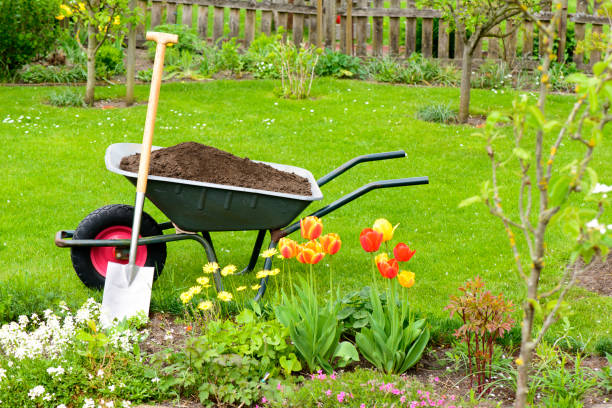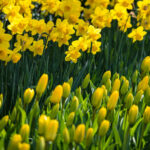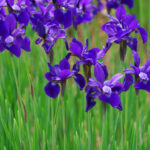Garden fertilization is key to maintaining a healthy, productive garden. Proper fertilization ensures that plants receive the nutrients they need to grow, bloom, and produce. Here’s a breakdown of what you need to know about garden fertilization:
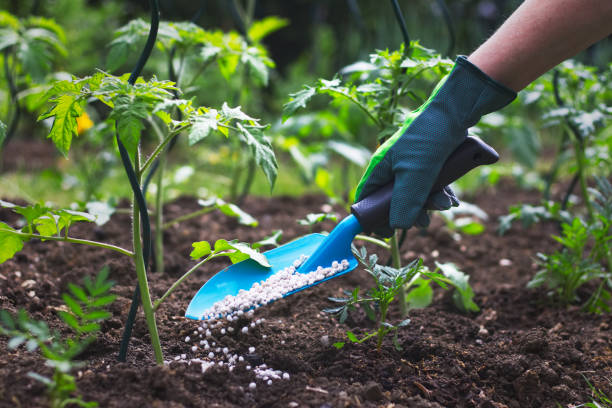
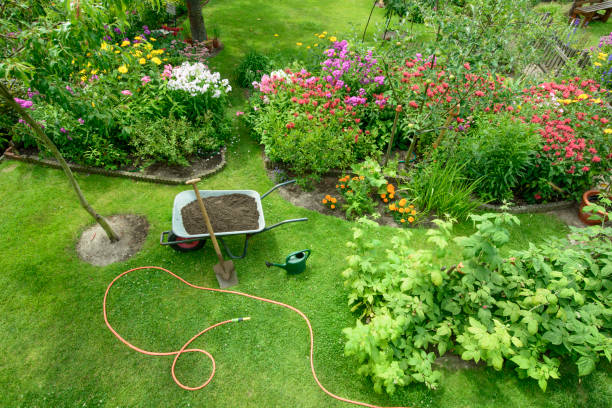

1. Understanding Soil Health
Before applying any fertilizer, it’s important to know the health of your soil. A soil test can tell you its pH level and nutrient content, allowing you to apply the right type of fertilizer. Healthy soil naturally contains many of the nutrients plants need, but it might be deficient in some areas, especially after continuous planting.
2. Types of Fertilizers
– Organic Fertilizers: These come from natural sources like compost, manure, bone meal, and blood meal. They slowly release nutrients as they decompose, improving soil structure and promoting long-term fertility. Organic fertilizers are eco-friendly and improve soil life.
– Inorganic (Chemical) Fertilizers: These are synthetic and provide nutrients quickly, which is beneficial for fast-growing plants or when soil is extremely deficient. However, they don’t improve soil structure and can cause nutrient imbalances or harm beneficial organisms if overused.
3. The Three Major Nutrients (N-P-K)
The three primary nutrients that plants need are nitrogen (N), phosphorus (P), and potassium (K).
– Nitrogen (N) promotes leafy, green growth. It’s vital for vegetables and leafy plants.
– Phosphorus (P) is essential for root development and flowering. It’s important for fruiting plants like tomatoes or flowers.
– Potassium (K) helps with overall plant health, improving disease resistance and the plant’s ability to withstand harsh conditions.
Fertilizers are labeled with an N-P-K ratio, such as 10-10-10, indicating the percentage of each nutrient.
4. Application Techniques
– Granular Fertilizer: This type is usually slow-release and is either mixed into the soil before planting or scattered around established plants.
– Liquid Fertilizer: These are fast-acting and can be applied during watering, providing an immediate nutrient boost.
– Foliar Feeding: Applying liquid fertilizer directly to the leaves can provide nutrients faster, especially in nutrient-deficient plants, but should not replace regular soil fertilization.
5. Fertilizing Different Types of Gardens
– Vegetable Gardens: Require higher amounts of nutrients, especially nitrogen, to support rapid growth and high yields. Fertilize at the start of the season and side-dress during mid-season for heavy feeders like tomatoes and corn.
– Flower Gardens: Often benefit from phosphorus-heavy fertilizers to promote flowering. Roses, for example, love a balanced fertilizer but benefit from a mid-season boost with something like 5-10-5.
– Lawns: For lawns, nitrogen-rich fertilizers are essential. Fertilize during spring and fall, avoiding hot summer months.
6. Timing is Everything
– Early Spring: Fertilizing in spring supports the plant’s early growth and helps it develop a strong foundation.
– Mid-Season Boost: Fast-growing or heavy-feeding plants may need more nutrients mid-season, especially if they are starting to show signs of deficiency like yellowing leaves or stunted growth.
– Late Summer/Fall: Applying fertilizers in the fall, particularly for perennials, helps plants build up reserves to survive the winter and come back stronger in the spring.
7. Signs of Nutrient Deficiency
Common signs that your garden might need fertilization include:
– Yellowing leaves (often a nitrogen deficiency)
– Poor flowering or fruit production (phosphorus deficiency)
– Weak or stunted plants
8. Avoid Over-Fertilizing
While fertilizers can be beneficial, overuse can harm plants by “burning” them, creating nutrient imbalances, or polluting local waterways. Always follow the recommended amounts and frequencies for fertilization.
By taking care of soil health and using the right fertilization strategies, you can create a thriving garden that’s both beautiful and productive!

